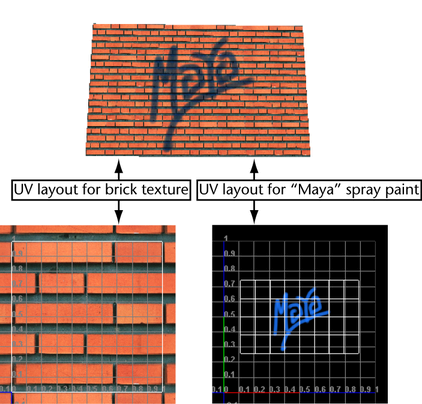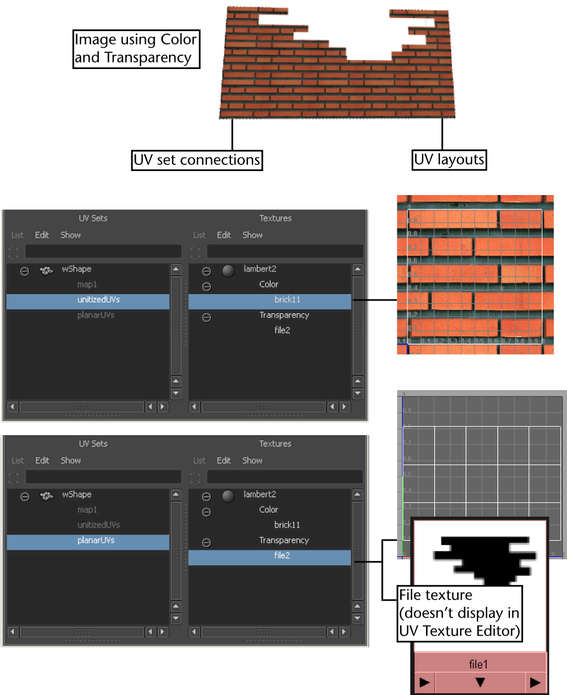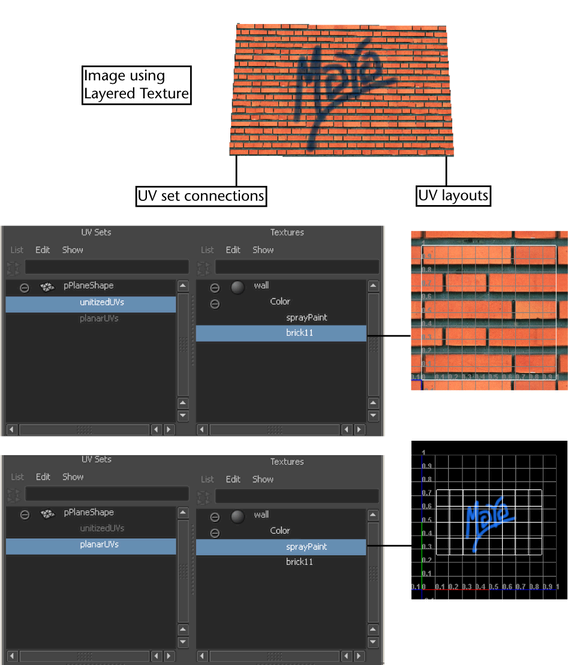You can create multiple arrangements of UV texture coordinates for a surface mesh using UV sets. UV sets are useful when an object requires multiple UV layouts for different textures (known as multi-texturing).
For example, if you create a brick wall and want to layer spray paint on top, you can use one texture for the bricks and one texture for the paint using a layered texture. If the brick texture repeats but the paint texture doesn’t, you will want different UV layouts (UV sets) for each.
If you are planning to pre-light the surfaces in your scene (also referred to as light baking), you’ll want to use UV sets to store the shading and lighting color information from the rendered appearance of a polygon mesh directly on the color per vertex information for the mesh.

The main steps to set up multi-texturing are:
- Assign multiple textures to an object’s material.
These textures can be assigned to different material attributes, such as Color and Incandescence, or assigned to a single attribute using a Layered Texture node.
- Create UV sets with different layouts.
- Link each UV set to a given texture using the Relationship Editor.
Examples
The following examples show UV sets used to texture a brick wall. In both examples, the UV sets are:
- unitizedUVs—for the repeating brick texture.
- planarUVs—for the non-repeating texture.
UV sets for Color and Transparency
In this example, the UV sets are connected to textures on different attributes of the material—Color and Transparency.

UV sets for a Layered Texture
In this example, the UV sets are connected to layered textures.
